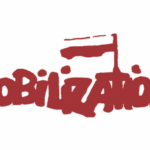The relationship between media and politics today is deeply entrenched in the wide use of information and communication technologies to the point that scholars speak about the emergence of hybrid media systems in which older and newer media logics combine. However, it is still unclear how the configuration of hybrid media systems changes across countries today, especially with regard to the interconnection between media and politics. The article develops a theoretical framework to capture such national differences.
The relationship between media and politics today is deeply entrenched in the wide use of information and communication technologies to the point that scholars speak about the emergence of hybrid media systems in which older and newer media logics combine. However, it is still unclear how the configuration of hybrid media systems changes across countries today, especially with regard to the interconnection between media and politics. In the article, we aim to develop a theoretical framework to capture such national differences. In so doing, we want to develop a heuristic device to understand whether the transformations brought about by information and communication technologies in the media and political realm also contribute to reshaping national media systems and to what extent. After outlining the main scope of the article in the ‘Introduction’ section, we discuss the theoretical framework that Hallin and Mancini developed to compare media systems across countries, and we present this framework’s main strengths and weaknesses when used as a tool for understanding the relationship between media and politics in the digital era. We then argue for the need for an updated and expanded version of such a theoretical framework: first, we update its four original dimensions (structure of media market, political parallelism, state intervention and journalistic professionalism) transversely including information and communication technologies–related indicators; second, we expand the original theoretical framework with one new dimension (grassroots participation) and the related indicators. In the ‘Conclusion’ section, we summarize our theoretical proposal and present some indicators and potential comparative data sources to assess similarities and differences of national media systems across countries. Finally, we also note two limitations of the article.
Mattoni, Alice, and Diego Ceccobelli. 2018. ‘Comparing Hybrid Media Systems in the Digital Age: A Theoretical Framework for Analysis’. European Journal of Communication, July, 0267323118784831. https://doi.org/10.1177/0267323118784831.28/10/2025

14/10/2025

Journal Article - 2025
Journal Article - 2023
Journal Article - 2023
Journal Article - 2023
Journal Article - 2023
Monograph - 2023
Monograph - 2022
Monograph - 2022
Journal Article - 2021
Journal Article - 2021